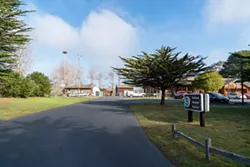
Why the sun might be setting on Humboldt County’s tsunami siren system
Troy Nicoloni was still at the Woodley Island office of the National Weather Service before dawn on March 11, 2011, after what had been a long night for the then warning coordination meteorologist who was monitoring updates after a massive rupture of the subduction zone off the coast of Japan. Later upgraded to a magnitude-9.1 earthquake — one of the largest recorded in modern history — the first alert had been issued just before 10 p.m. PST. Soon, news began trickling out about the ensuing tsunami that reached parts of Japan’s shoreline within minutes, overwhelming protective barriers, killing thousands and sweeping away entire cities. Now surges from 5,000 miles away were barreling across the Pacific Ocean at the speed of a jet airliner and a wide swath of the West Coast, including Humboldt County, was under the highest assigned threat level — a tsunami warning — meaning low-lying areas areas like King Salmon and Manila were potentially at risk of destructive flooding. In those early morning hours, Nicolini coordinated with representatives from area tribes, local emergency officials and their counterparts in Mendocino and Del Norte counties, who collectively decided to sound the local alarm at 4:30 a.m. At the appointed time, Nicolini sat down at the NWS command console and pushed a sequence of buttons that sent out a signal to remotely trigger the region’s warning system. Simultaneously, across hundreds of miles of the North Coast, sirens blared, NOAA weather radios switched on and programming on television and radio was automatically interrupted to announce a tsunami was on the way. Law enforcement went door to door in vulnerable areas to urge residents to evacuate and a shelter was established at Redwood Acres. The Samoa Bridge was closed and school districts across Humboldt County canceled classes for the day. “With everything happening at the same time, there was perfect clarity, I feel like, in northwestern California about what was going on,” Nicolini said in a recent interview with the Journal. Three hours later, the first waves began to arrive. Humboldt was spared but the Crescent City Harbor was not. While most of the Del Norte County-based fishing fleet was able to leave before the surges hit, dozens of boats were crushed and many of the docks destroyed, leaving $20 million in damage. One man was killed after being swept away while trying to photograph the tsunami near the mouth of the…

